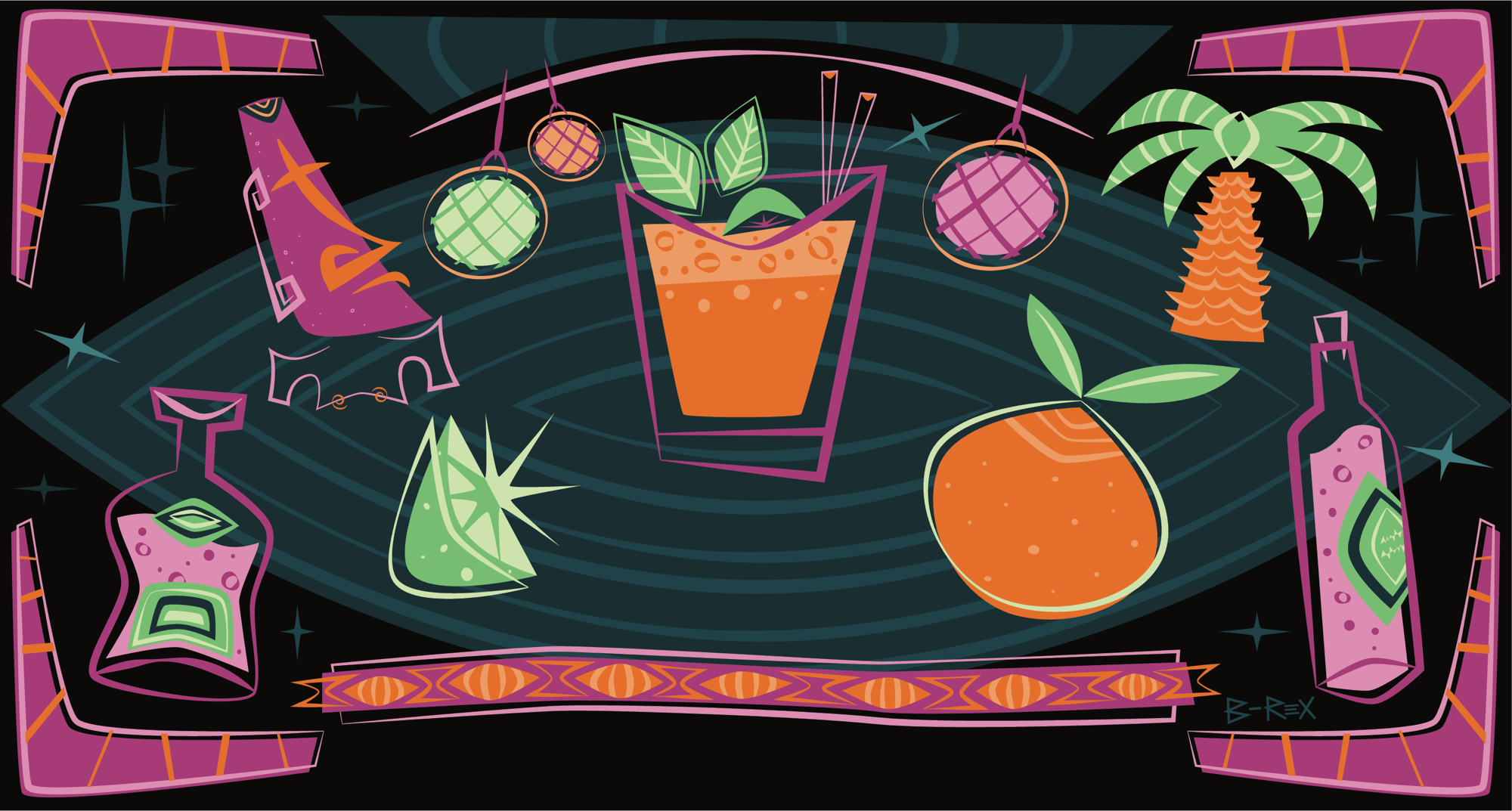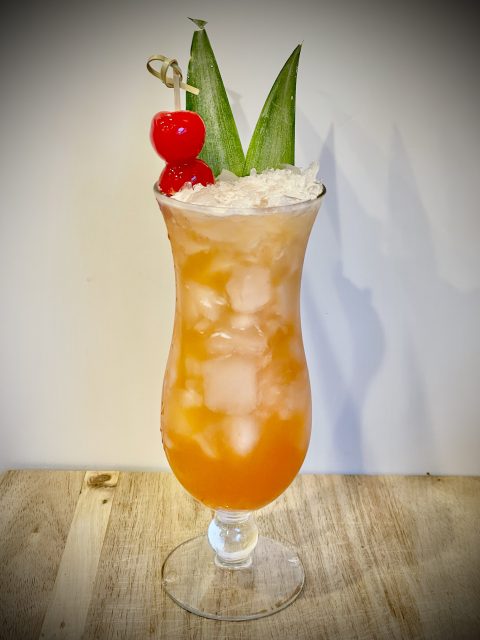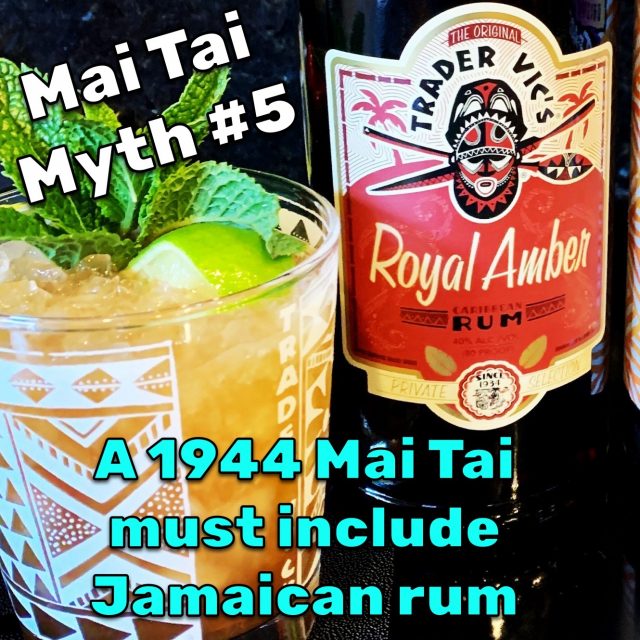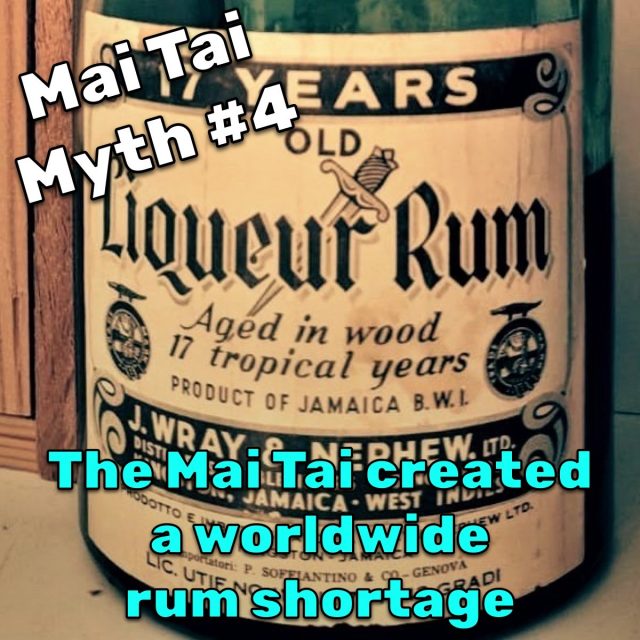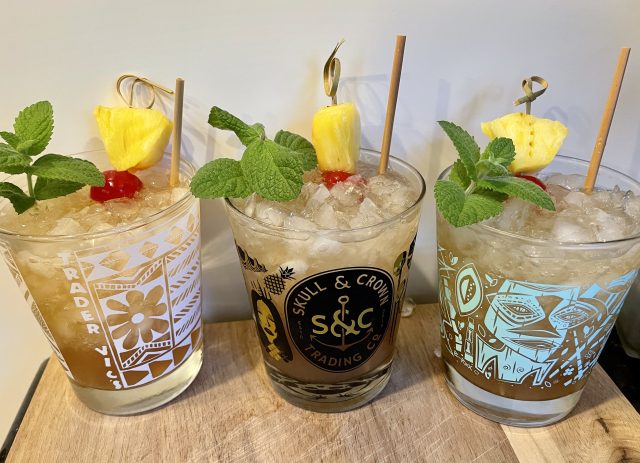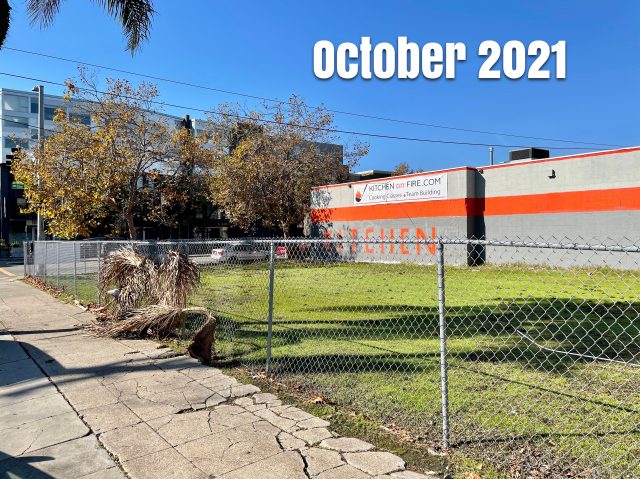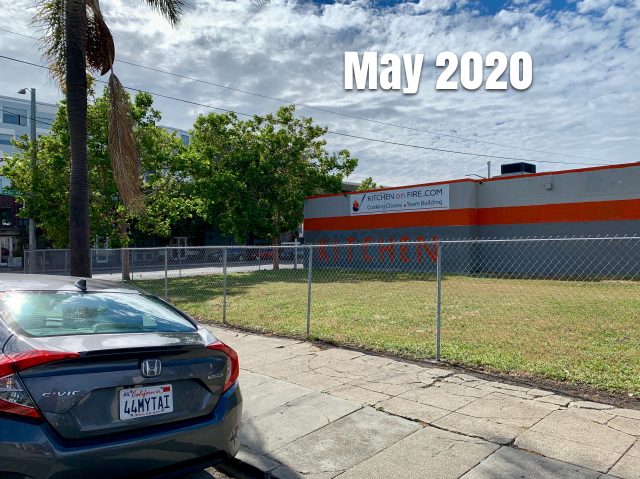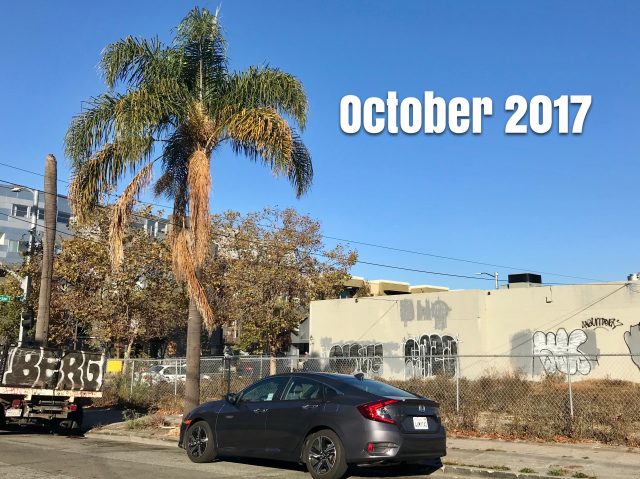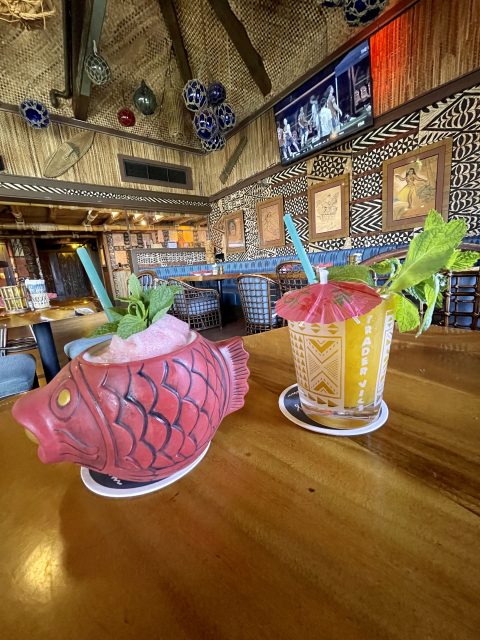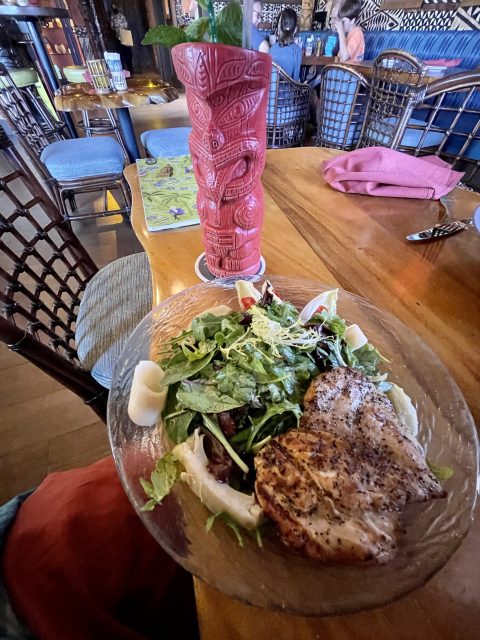A little light on the pineapple juice and a tad light on the Campari. Hamilton Pot Still Black Jamaican Rum, always.
Mai Tai Myth: a 1944 Mai Tai Must be Made with Jamaican Rum
Leading up to Mai Tai Day (August 30), we are sharing five Mai Tai myths.
The original Mai Tai was made in 1944 by Trader Vic Bergeron with 17 year Jamaican rum from J. Wray & Nephew. Subsequent to that, the Trader Vic’s chain has used various Jamaican rums, rum blends that included Virgin Island rum, rums from Martinique, and currently are using Trader Vic’s Royal Amber rum distilled in Puerto Rico.
Nonetheless, some people think that a “1944 Mai Tai” must only include Jamaican rum.
The logic behind this seems a little twisted. The original Mai Tai had Jamaican rum, so it must only ever be made with Jamaican rum. As if today’s Myers’s or Coruba unaged blended rums with caramel color would be comparable to the original full pot-still rum aged for 17 years.
Additional perspectives indicate that the term “1944 Mai Tai” means the original recipe (thus, Jamaican rum). My perspective is that the term “1944 Mai Tai” is most typically meant to refer to a recipe featuring lime, curaçao, orgeat, sugar, and rum – in other words, NOT an Island Mai Tai. Some folks have said that this should be called a “Trader Vic’s Mai Tai” to mean this recipe using any kind of rum, and to those folks I remind them that Trader Vic’s themselves have recently had a 1944 Mai Tai on their menu using non-Jamaican rums.
If using rums made outside of Jamaica is good enough for Trader Vic’s, it should be good enough for you. The Mai Tai does not have a geographical origin, like the Ti Punch or Daiquiri, so use whatever rum is your favorite. I do love Jamaican rum, but you should use whatever rum you like. Then enjoy. Cheers.
Want to learn more? Check our website for additional historical notes and essays. Or join us in Emeryville at Trader Vic’s Mai Tai Day event on August 28 for a special seminar on the Hawaiian Mai Tai.
Mai Tai Myth: The Mai Tai Created a Worldwide Rum Shortage
Leading up to Mai Tai Day (August 30), we are sharing five Mai Tai myths.
The original Mai Tai was made with a 17 year Jamaican rum from J. Wray & Nephew. This odd-aged release perhaps had something to do with barrels of rum sitting in warehouses during Prohibition and was available alongside Wray’s 15 and 20 year releases.
In the 1970 press release describing the origin of the Mai Tai, Trader Vic Bergeron states “The success of the Mai Tai and its acceptance soon caused the 17-year-old rum to become unavailable, so it was substituted with the same fine rum with 15 years aging.” This is where the myth originates, with people doing a shorthand to say that “rum” had a shortage due to the Mai Tai.
Firstly, Vic didn’t say that all rum ran short due to the Mai Tai, he said that one specific type of rum did. And even that is perhaps a tall-tale since Wray & Nephew certainly could have kept bottling a 17 year rum if they wanted to. There might have been a temporary gap in availability but if they could produce 15 year old rums for decades surely they could have figured out a way to keep some barrels in the warehouse for a couple additional years. But people like “round numbers” so that’s why you typically see 10, 12, 15, and 20 year old rums, but not 11, 13, and 17.
It is also unclear how many bottles Wray made of the 17 year. Perhaps Vic pulled a limited release rum?
There was not a “worldwide rum shortage” in the 1950s. It was a shortage of one specific rum that probably would have been discontinued whether or not it was used at Trader Vic’s service bar in 1944.
Want to learn more? Check our website for additional historical details. Or join us in Emeryville at Trader Vic’s Mai Tai Day event on August 28 for a special seminar on the Hawaiian Mai Tai.
Wilfred’s Lounge in Napa Makes a Fine Little Saturday
Late summer seemed like a good time to venture up to Napa to check out the wine town including their very fine tiki bar and restaurant, Wilfred’s Lounge. They have a main entrance but the bar has open doors and you can order at the bar and drink there or take it upstairs to the deck or into the ship’s hull section.

We did a group dinner and given the size of the party we were seated on the patio. The restaurant isn’t large and so the patio is used as overflow and additional seating. While it’s not a dark immersive experience, there are worst places to hang out in the early evening given the cool breezes from the adjacent Napa River. And plenty of people watching.
The Hawaiian-inspired menu isn’t vast but we really liked the meal. I found my Kalua Pork to be just the right amount of greasy and and had a mild but very satisfying flavor. And we made sure to leave room for some ‘Ono Pie (don’t call it “Hula”) with coconut ice cream, macadamia nuts sprinkled on top with caramel, and cream. So good.
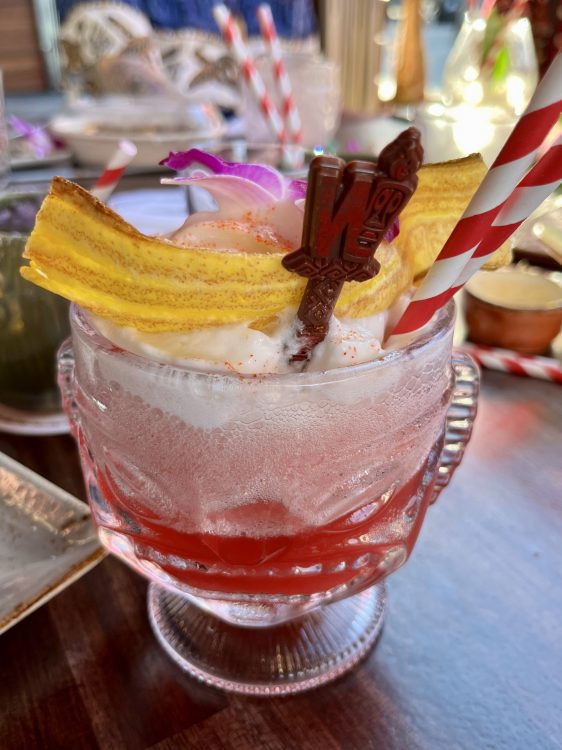
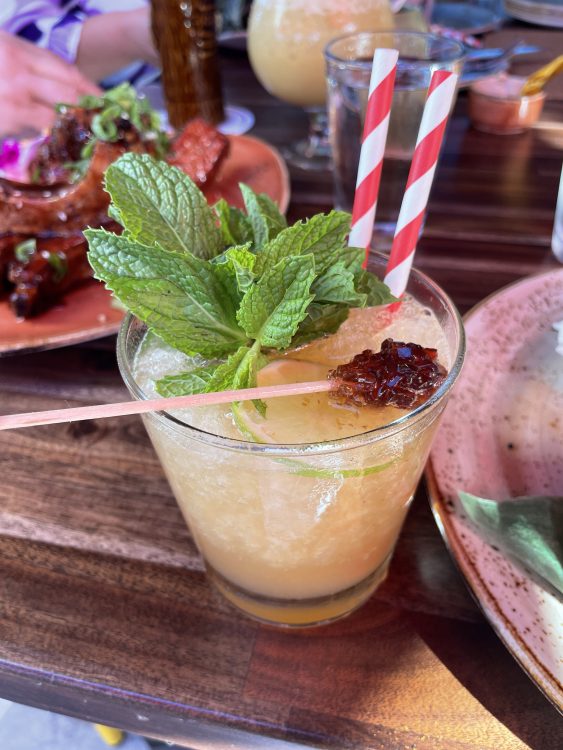
The cocktails remain on point. Their Mai Tai uses Jamaican and Martinique rums but these are not too challenging for the wine crowd and leaned a bit towards a lime cordial taste. The Doc’s Grog was quite fantastic. The strawberry cocktail called Maximum Aloha continues to impress, not sticky sweet like you’d expect but a tart leaning base to balance all the coconut banana whip on top. They have a very good rum collection and reasonable prices. As the menu says “call your spirit,” which I did (with please and thank you) for a Mai Tai with Denizen Vatted Rum.
Thanks to Doc Parks and the crew who did so well to service our group, even when it expanded mid-meal. Reservations are always helpful on a weekend, and Wilfred’s has a large collection of mugs and other merchandise for sale. I’m also a fan of the size/shape of their swizzle stick.
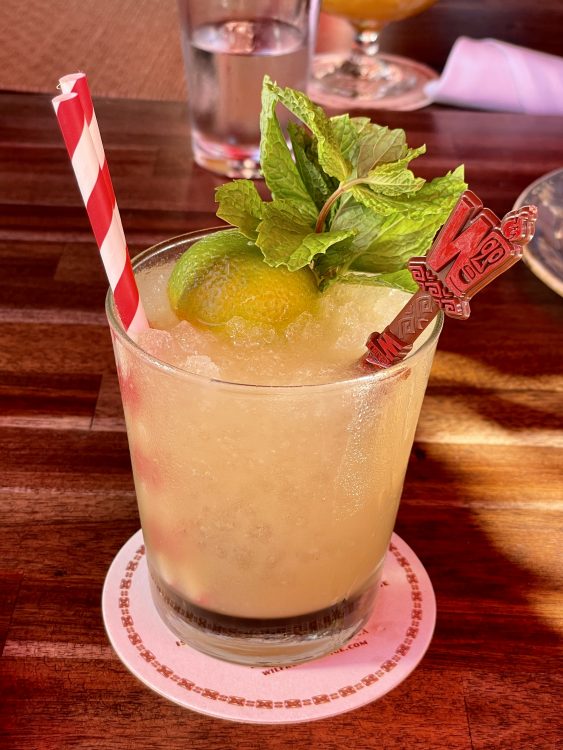
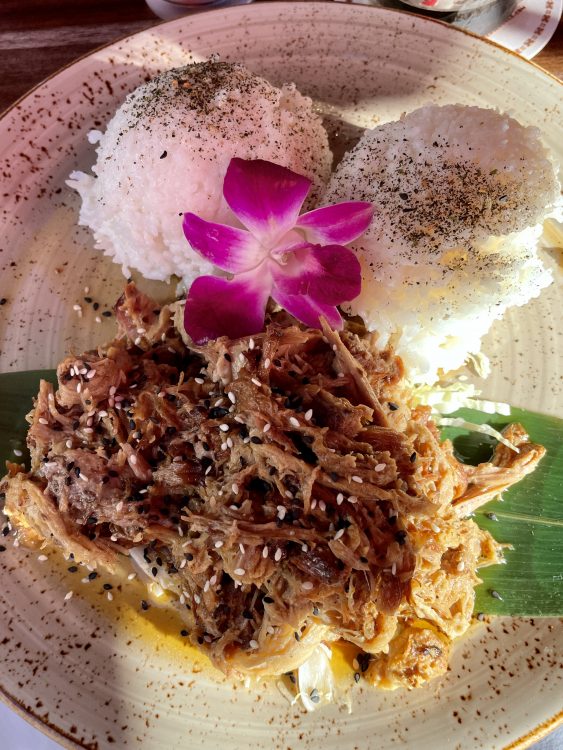
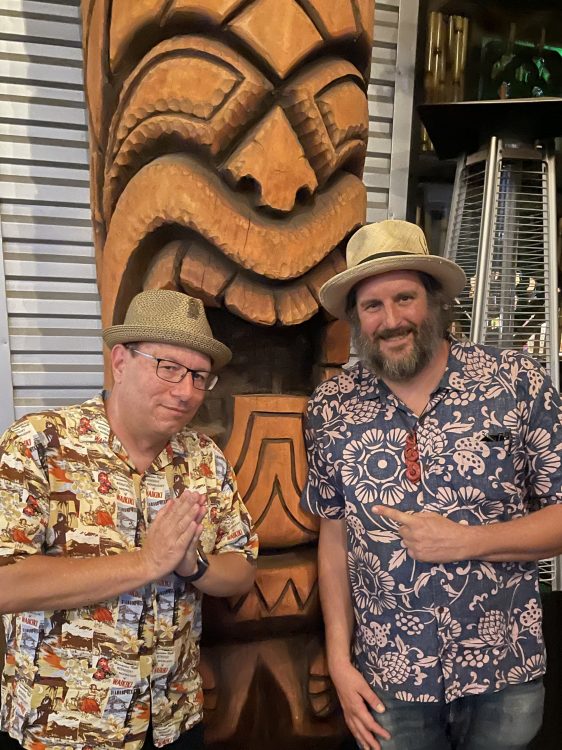
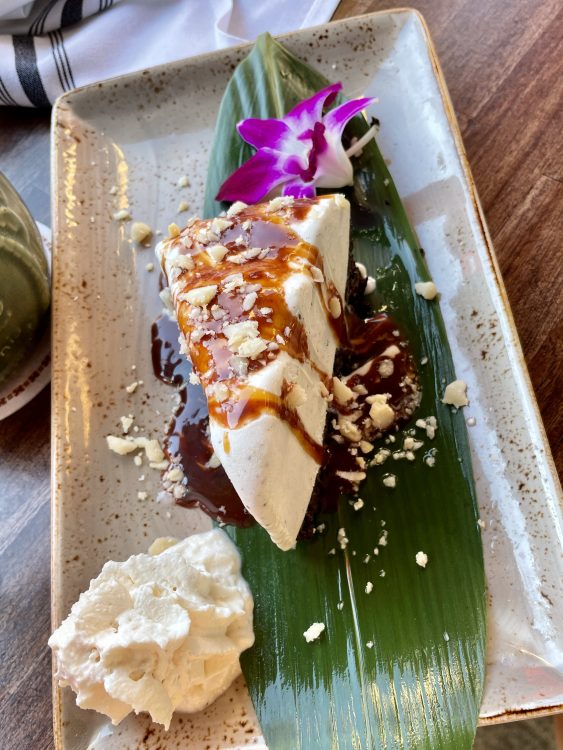
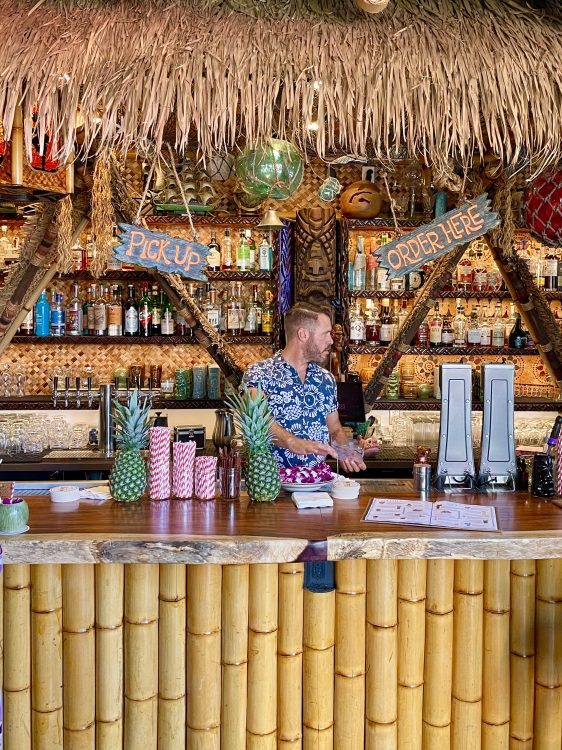
1950s-Era Hawaiian Mai Tai
When Trader Vic Bergeron included the Mai Tai on his cocktail menu for the Royal Hawaiian Hotel and Moana Hotel in 1953, he never knew the cocktail would become one of the most famous in the world. The cocktail’s exotic name surely helped get the drink ordered, but the taste is what made the tourists rave.
This style of Mai Tai was similar to the original 1944 recipe, but was adjusted to omit the long-aged rums that had been the featured spirit in the cocktail up to that point. The use of light rum in combination with a flavorful dark rum was common across all published recipes of this era, including in the recipe that Bergeron provided to a guest in a letter in 1956. This affords a lighter style to the cocktail, likely considered more refreshing and approachable for the average hotel guest.
The dark Jamaican rum of this era was not as ester-forward as what you might find today, and funky rums wouldn’t have been a good choice for tourists. So, think of something like Coruba or Myers’s rather than Smith & Cross. The commonly seen Demerara rums you find today would be a fine substitution. Rum floats were not common during this time-period, but more than two ounces of rum was often seen. So wonder the tourists loved those “tummy warmers.”
Though the recipes of this era vary, there are some common elements. Besides the use of both light and dark rum, the sweeteners were included in equal parts. Before pineapple and orange juice were added to the Hawaiian Mai Tai in the 1960s, we did see that citrus juice was used in healthy amounts. Lime was common, sometimes used in combination with lemon juice.
Looking at the recipes and how they varied, we taste tested some variants and came up with a generic version that is both representative and also easy to prepare. Not too boozy, not too tart. Just right.
1950s-Era Hawaiian Mai Tai (Generic)
1 oz Lime Juice
⅓ oz Orgeat
⅓ oz Rock Candy Syrup
⅓ oz Orange Curacao
1½ oz Light Rum
1½ oz Dark Jamaican Rum or Demerara Rum
Shake with crushed ice and pour into a double-rocks glass, topping with more crushed ice. Garnish with mint or orchid, and either a pineapple spear or a speared pineapple chunk with a cherry.
The Halekulani Hotel still makes a Mai Tai that’s similar to this recipe, though they do add a ½ oz float of flavorful Lemon Hart 151 Demerara Rum.
Overgrown Again at 65th and San Pablo
This is the lot in Oakland where the original Trader Vic’s location stood from 1934 until it was closed in 1972 when Emeryville location opened a couple miles away. I’m not sure when the building was taken down. Literally ground zero for the Mai Tai, invented here in 1944.
From time to time I like to visit and see what the current state is, and notably the lot is now completely overgrown! Compare the photos from 2021 and 2020 to see what this could look like, and to 2017 when it was also overgrown.
You’ll note that one of the two palm trees that framed the entrance to Trader Vic’s is still standing and even has some green fronds. The other one was cut down in 2019 to a 4 foot stump. That stump later disappeared and supposedly was carved into a tiki by Notch Gonzalez. At least according to the “I am Tiki, from Trader Vic’s” page on Facebook. Check it out for even more historical details.
Getting back to the lot, I noticed the “lot for sale” signs are no longer present. Maybe someone bought it. Maybe someone gave up trying.
Relaxing Sunday Lunch at Trader Vic’s
Had an impromptu trip to Berkeley and we stopped in at Trader Vic’s Emeryville for a late lunch on Sunday. We were seated in the lounge and had a great time with our favorite appetizers Crab Rangoon and Cheese Bings. I had the Trader Vic’s Salad with chicken for lunch.
Went a little beyond the norm by having the E’Ville Awa cocktail, a very fine Trader Vic’s-style cocktail with pineapple, rums, gin, and brandy. I went with the no-booze Coral Reef for desert, a sweet blended drink with strawberries, pineapple, and coconut cream. Yummy, and sure to give you a brain freeze.
Meanwhile Mrs. Mai Tai tried the Golden Grog, which is a grog-riff using Rhum Agricole, pineapple juice, and honey. Quite nice, and the agricole definitely helps this lean in a different direction than many of the Vic’s cocktails. She also tried the Mango Mai Tai, having tried the Guava last time. That’s made with light rum and while it tastes tropical it doesn’t really have a lot of “Mai Tai” taste to me. Which might be a plus or a minus, depending on who you are.
Always lovely to look at the scenery inside and to soak in the history of this Vic’s location that opened 50 years ago this year.
